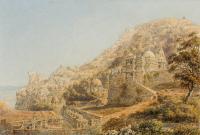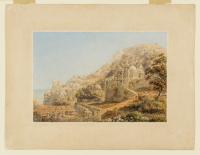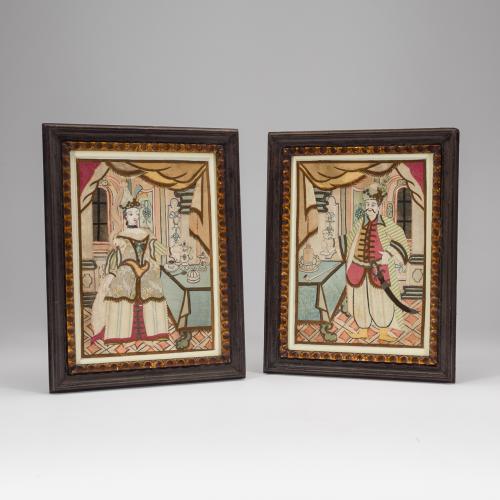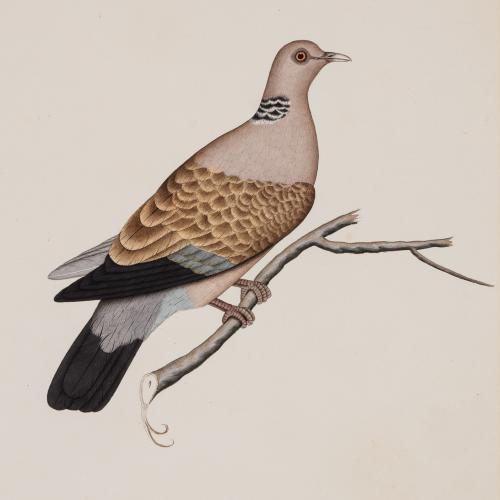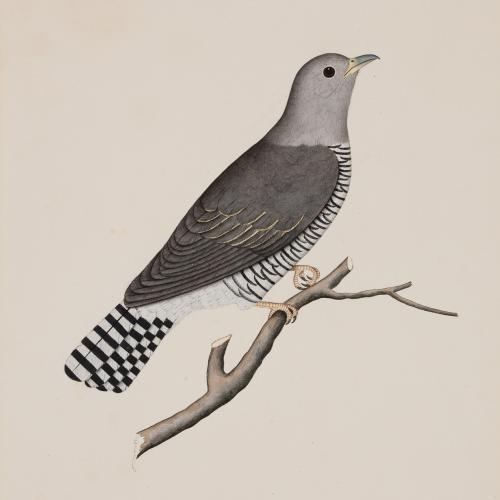
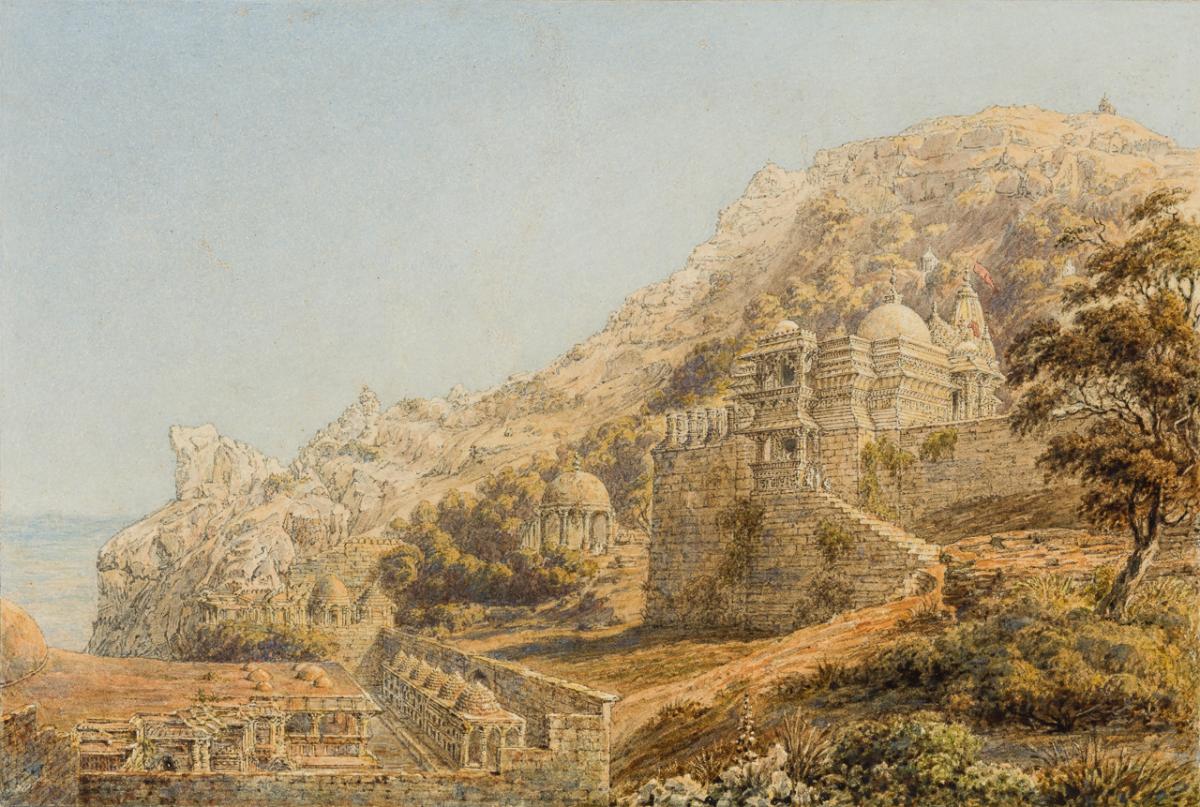
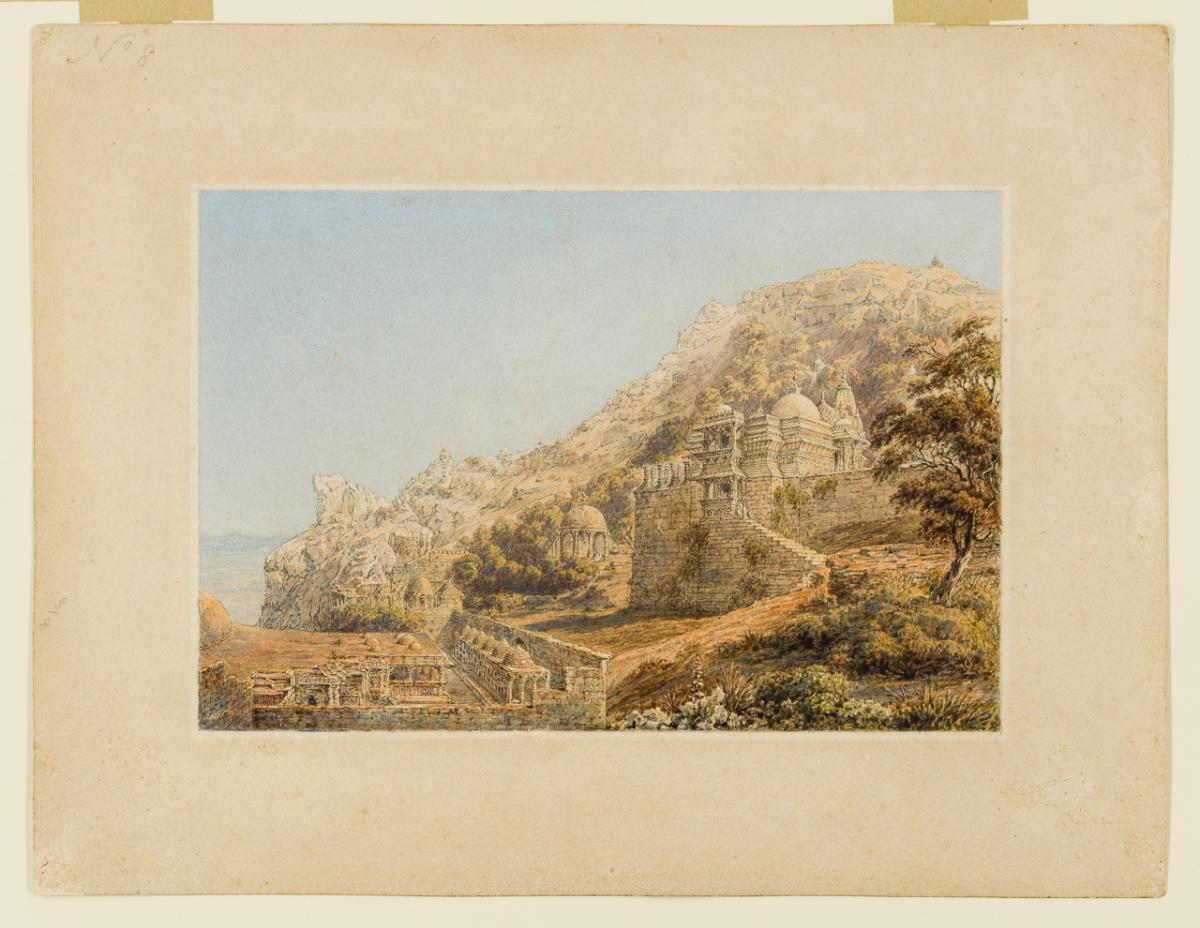
Price on application
This object is eligible for a Certificate of BADA Provenance
The BADA Standard
- Since 1918, BADA has been the leading association for the antiques and fine art trade
- Members are elected for their knowledge, integrity and quality of stock
- Our clients are protected by BADA’s code of conduct
- Our dealers’ membership is reviewed and renewed annually
- Bada.org is a non-profit site: clients deal directly with members and they pay no hidden fees
A View of Chittorgarh Fort - William Simpson.
India, 19th century.
Watercolour on paper.
14.5cm high, 21.5cm wide.
A scene depicting a view of the famous fort at Chittor, Rajasthan. The fort stands on a hill and acted as a palace complex; it also served as the capital of Mewar. Within the fort lie several temples and water tanks. This watercolour pays close attention to the architectural structures whilst also depicting the landscape in an evocative way. The fortress walls above and the recessed temple structure below highlight the fact that the structure is built on a hill. The intricate detail of the stonework of the walls and the chattris (cupolae), as well as the texture of the rock face, are worthy of attention.
Although the watercolour is not signed, the style of painting closely resembles that of the Scottish artist William Simpson, who was born in Glasgow on 28 October 1823. Simpson's London employers, the lithography firm Day and Sons, commissioned him to travel around India sketching well-known sites. He spent time in and around Delhi in 1857, sketching battle damage inflicted during the Siege of Delhi. He arrived in Calcutta in 1859, travelling widely before returning to London in 1862. In his autobiography, he mentions a sejourn in Rajasthan (Rajpootana), first travelling to Udaipur (Oodeypoore) and then to Chittorgarh (Chittore Ghur). He describes the latter, saying ‘this place is all Hindu architecture’ and refers to the ‘flat topped hills.’1 It is thus possible that this watercolour was painted during this visit to Chittorgarh.
Other Simpson paintings and watercolours from this time, in his inimitable style, can be viewed in the Victoria & Albert Museum, London. The highly detailed architectural work in combination with the slightly grainy texture created with very wet paint is mirrored in a painting of the Kailasantha temple at Ellora (accession no. 1167-1869). A series of landscapes shows very similar attention to the rocky outcrops (see, for example, accession nos D.630-1900 and D.628-1900).
Though this watercolour is unsigned and undated, of Simpson’s 248 recognised works, 35 have no signature, and a further 19 have neither date nor signature. Amongst these are a series of watercolours completed during his travels in India, including studies of members of the Bengal Infantry and Cavalry, a view of the Malabar Hill in Bombay (Mumbai), and a painting of Fort Agra. Furthermore, he documented the British Eclipse Expedition at Bekal, in a dated, but unsigned sketch of 1871.2
n.b. accession nos are clickable links
1 Simpson, William. The Autobiography of William Simpson, RI. Edited by George Eyre-Todd. London: T. Fisher Unwin, 1903. pp. 139-140
2 'William Simpson list of paintings', The Mitchell Library, retrieved from https://libcat.csglasgow.org/documents/836643/988153/William+Simpson+Collection+list+of+paintings/ccb0355a-4147-42f8-a1e0-5d0ed4f41d64
The BADA Standard
- Since 1918, BADA has been the leading association for the antiques and fine art trade
- Members are elected for their knowledge, integrity and quality of stock
- Our clients are protected by BADA’s code of conduct
- Our dealers’ membership is reviewed and renewed annually
- Bada.org is a non-profit site: clients deal directly with members and they pay no hidden fees


